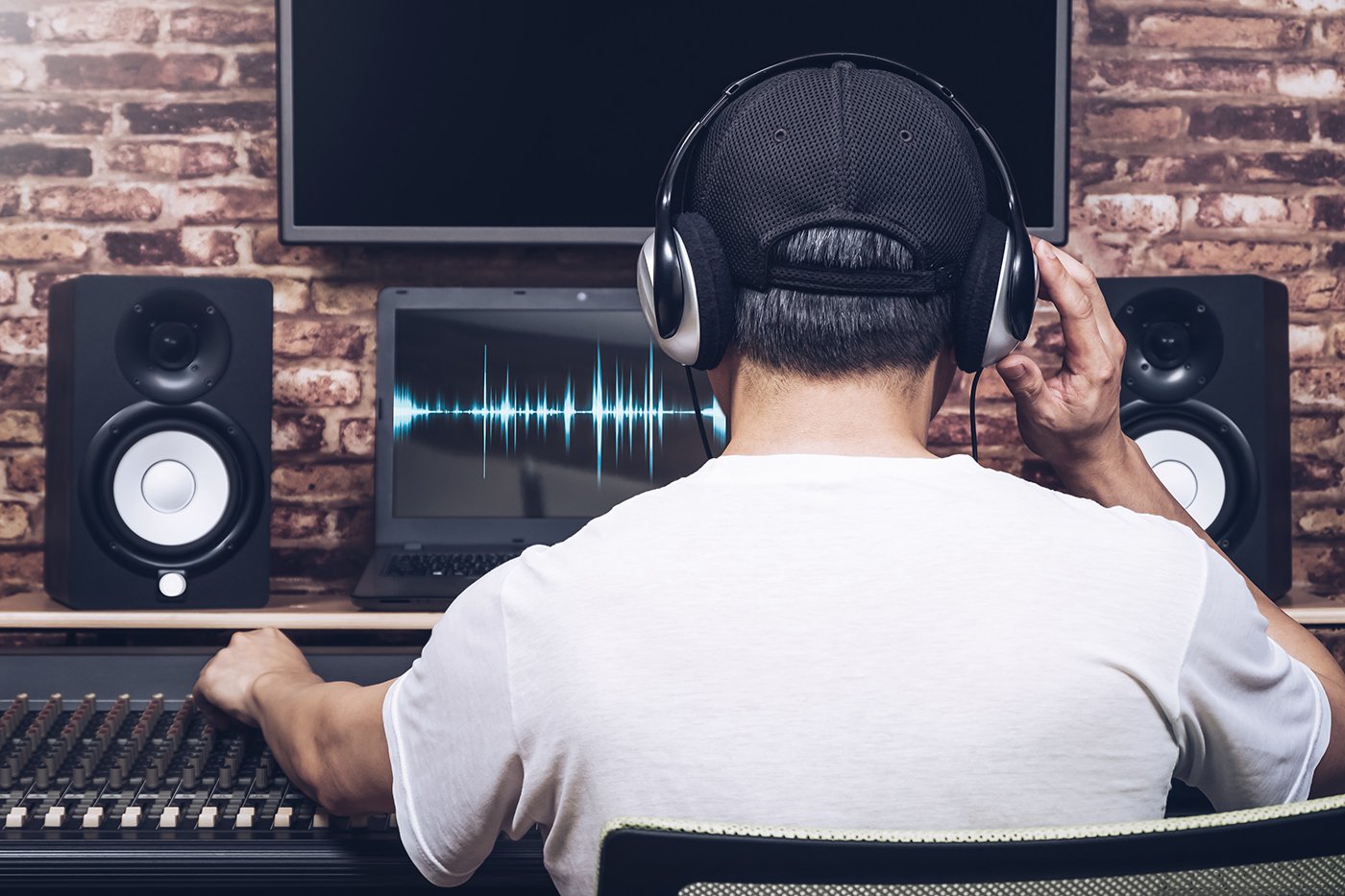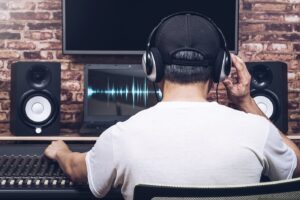
Audio editing ranges from removing background noise from voice recordings to editing and remodelling entire podcasts. Or do you want to enhance or alienate your vocal recordings with special reverb, modulation or time and pitch effects? Audio technology today has reached the point where the unimaginable is possible. Even cloning by AI is possible.
Give us your recording – it’s in good hands.
The Importance of Audio Editing
- Professional Quality: Effective audio editing transforms raw recordings into polished, professional-quality audio, which is essential for music releases, films, and broadcasts.
- Creative Expression: Editing allows artists to explore their creativity by rearranging, layering, and applying effects, leading to innovative soundscapes.
- Clarity and Engagement: Well-edited audio captures listeners‘ attention, making it easier for them to engage with the content, whether it’s music, a podcast, or a film.
- Consistency: Audio editing ensures that levels and effects are consistent throughout a project, creating a cohesive listening experience.
Understanding Audio Editing: Crafting the Perfect Sound
Audio editing is a crucial aspect of music production, podcasting, film scoring, and more. It involves manipulating audio recordings to achieve the desired sound quality, structure, and emotional impact. Here’s a comprehensive look at audio editing, its processes, tools, and importance.
What is Audio Editing?
Audio editing refers to the process of refining and altering audio files to enhance their quality and coherence. This can involve cutting, rearranging, or manipulating sound segments, adjusting levels, applying effects, and ensuring a polished final product.
Key Processes in Audio Editing
- Recording
- The first step in audio editing involves capturing sound using microphones and recording equipment. High-quality recording sets the foundation for effective editing.
- Trimming and Cutting
- Editors remove unwanted sections of audio, such as mistakes, pauses, or background noise. This helps create a more cohesive and engaging listening experience.
- Arranging and Compiling
- Audio segments are rearranged to create the desired flow. In music production, this might involve assembling different takes or layering tracks. In podcasts or films, it may involve organizing dialogue and sound effects.
- Adjusting Levels
- Balancing the volume of different tracks is essential. Editors adjust levels to ensure that vocals, instruments, and effects blend harmoniously without distortion or clipping.
- Applying Effects
- Effects like reverb, delay, compression, and EQ (equalization) can enhance the audio. Each effect contributes to the overall sound, whether by adding depth, clarity, or texture.
- Noise Reduction
- Background noise, hums, and other unwanted sounds can detract from the quality of a recording. Techniques such as noise gating, filtering, and spectral editing help to eliminate these disturbances.
- Automation
- Volume and effects can be automated to change dynamically throughout a track. This allows for greater control and can enhance the emotional impact of the audio.
- Exporting and Formatting
- Once editing is complete, the final product must be exported in the appropriate format (e.g., WAV, MP3) and at the right sample rate for its intended use (e.g., streaming, CD, broadcast).
Essential Tools for Audio Editing
- Digital Audio Workstations (DAWs)
- Software like Pro Tools, Logic Pro, Ableton Live, and Adobe Audition provides a platform for recording, editing, and mixing audio.
- Audio Interfaces
- These devices connect microphones and instruments to a computer, ensuring high-quality audio capture and playback.
- Microphones and Accessories
- Selecting the right microphone is vital for capturing clear sound. Accessories like pop filters, shock mounts, and windshields further improve recording quality.
- Plugins and Effects
- Audio plugins enhance DAWs with additional effects and processing capabilities. Popular plugin formats include VST, AU, and AAX.
- Monitors and Headphones
- Accurate monitoring is essential for effective editing. Studio monitors and high-quality headphones ensure that edits are made with precision.

